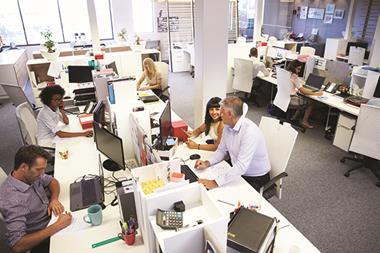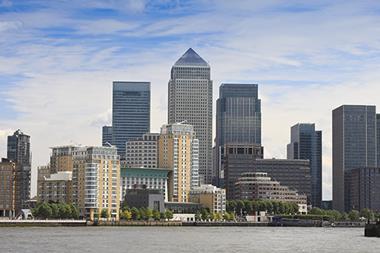There is no doubt that we are in the grip of a remarkable and quite unprecedented societal shift that is radically changing the geography of work: a shift that, by enabling people to choose to work the way they want, is overwhelmingly positive.

It is a subject that is close to my heart. As chief executive of IWG, delivering hybrid work solutions to many businesses, I’ve had the opportunity to see first hand the transformative effects of the hybrid revolution.
I’ve been talking about the rise of hybrid working for more than two decades now – a phenomenon enabled by the liberating effects of technology, cutting the ties that used to restrict people across the world to a single (and usually city-centre-based) workplace and instead empowering them to work in the heart of their local community. As a result, there has been record demand in co-working and office locations across the suburbs, small towns and countryside across global markets.
For generations, the city has been at the epicentre of people’s lives. Its pull has emptied communities of their most economically active talent. Commuter-belt towns and parts of cities have become barren during daylight hours.
Perhaps above all, the ‘city as a workplace’ has exposed millions of people to the destructive daily commute. Little has done more to add to human misery than this horror, brought about in the 19th and 20th centuries by business bosses’ determination to keep their people under their eye – and under their control.
However, thanks to the recent conjunction of digitalisation, environmental awareness and Covid-19, things are changing fast. And research, from IWG and Arup, illustrates the sheer pace at which the transformation is happening.
First, people are leaving cities. Since 2020, outbound migration from major US cities to smaller communities has increased by a staggering 59%. And now, close to half a million further city-dwellers in the US are projected to leave urban areas for the suburbs, smaller cities and rural regions, most of them in search of larger homes and a better work/life balance – and this is a trend witnessed globally.
These changes are having an impact on property prices. Between 2020 and 2021, property prices in 20 British cities (excluding London) rose by an average of 8.9%, below the 10.8% growth rate recorded by homes in their surrounding areas during the same period.
It’s not just about where people want to have their homes; it’s also about where they want to spend their time and money. UK mobile phone data tells us that footfall in small towns, suburbs and seaside communities has risen by a full 50% since 2019.
The impact of that 50% rise in footfall, creating new opportunities for many communities, is clearly reflected in the research. It reveals how the resulting higher levels of economic activity in suburbs and small communities are breathing much-needed financial vitality into areas.
And it aligns with the findings of another IWG/Arup research study from 2021, which measured the positive economic impact to be gained from the rebalancing of where work takes place. This found that rural and suburban economies could generate annual increases in local consumer spending of $1.3bn (£1bn) in the US and £327m in the UK as a result of the growth of hybrid working.
Today, almost half (48%) of workers in the UK and 40% of those in the US are already working in the hybrid model and it’s continuing to grow in popularity.
In the UK, 88% of workers say that flexible working arrangements are essential for a more fulfilling professional life that delivers improvements in their mental, physical, financial and social health. So it’s unsurprising that 83% of the UK’s HR professionals recognise hybrid working as a means of attracting and retaining talent.
City authorities can seize the opportunity that hybrid working offers by promoting investment in flexible workspaces near local communities and leveraging their central position to become vibrant hubs for decision-making, social interaction, entertainment and tourism.
Daily commuting to city centre offices has the biggest carbon footprint of any way of working. So, it resonated strongly when Future Earth’s Global Carbon Project reported a 2.4-billion-tonne fall in fossil carbon dioxide emissions during the 2020 lockdowns, with the largest proportion coming from reduced transport emissions.
Previous Arup and IWG research has shown that a permanent shift towards hybrid working in the heart of local communities would drive carbon reductions of up to 87% in the US and 70% in the UK.
The research proves we are clearly witnessing the rebirth of suburbs, towns and the countryside through hybrid working. Domestic migration to smaller cities and rural areas continues to accelerate ahead of pre-pandemic levels. And, with 48% of UK workers and 40% in the US already working in the hybrid model, the benefits of hybrid are increasingly impossible to ignore.
That’s why clear-sighted policymakers, planners and businesses are embracing its benefits in their droves. And it’s essential for all of us and our planet that these visionaries convince their peers to listen.
Mark Dixon is founder and chief executive of IWG





























No comments yet